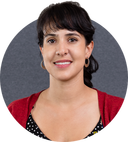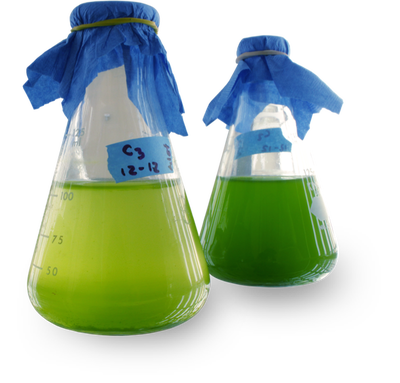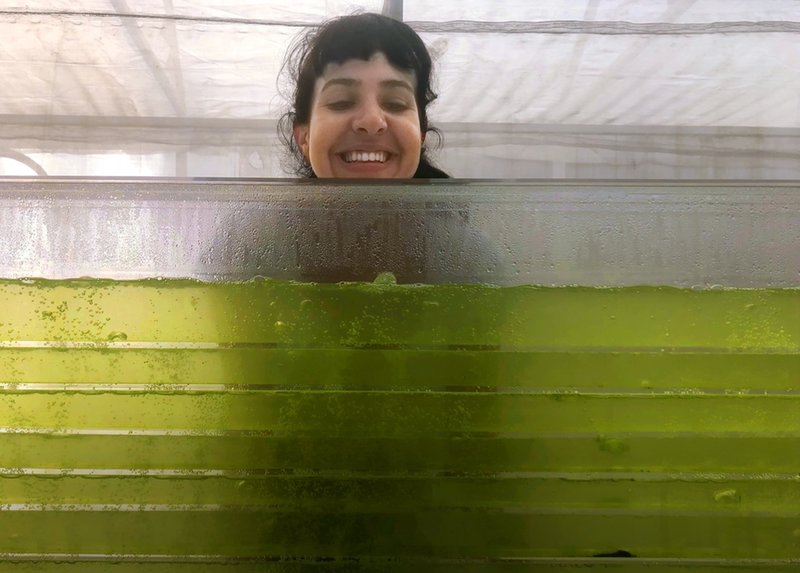Q:WhatdoesyourmicroTERRA do?

A:Wetakefishfarmwastewaterandgiveittoourmicroalgae.Thiscleansthewatersothewatercanbereused.Itsavesalotofwater,too.Italsohelpsstopdownstreampollutionthatwilldestroyecosystems.
Ourcompanyusesaspecialstrainofmicroalgae.Whenitgoesthroughphotosynthesis, itproducesprotein.Wethenprocesstheproteinfromthemicroalgaeintofoodforthe fish.
Q:Howdoyougrowthe microalgae?

A:Microalgaearemicroscopic.So,westartinthelabonasmallscale.Weknowwhatthemicroalgaelike.Weknowwhattheyneedtogrow.Andweknowwheretheythriveingeneral.Butwehavetoscaleupbecauseagricultureis huge.

Q:So,toscaleitup,youhavetogrowmassiveamountsof microalgae?

A:Weuseabioreactor.Wehavepretreatment [in the lab].Wehavebioreactorswherethemicroalgaegrowandaharvestertocollectthebiomass.Buildingtheharvesterwasachallenge.Ithadtoholdlargequantitiesofwastewater.Ithadtobecheapandeasytomanage, too.

Microalgaeconvertexcessnutrientsinwaterintoprotein.Theyalsorelease oxygen.
Q:Isitdangeroustoworkwith wastewater?

A:Wastewaterisfullofharmfulbacteria.Weuseglovesandwearmasksandgownsfor protection.

Floresexaminesatankfullofwastewaterand algae.
Afarmcreates wastewater.
Wastewaterisprocessedwith microalgae.
Cleanwaterandproteinare produced.
Proteinismadeintofish food.
Foodisusedtofeedfishon
the farm.
CircularEconomy






Q:Doyouhaveanyadviceforpeoplewhomightwanttobecomeenvironmental scientists?

A:Iwouldsaytostartonsmallprojects.Thinkofdifferentwaysyoucanreducewasteorpollutants.Itcouldbesomethinglikeatinywatertreatmentpond.Everytinyexperimentcounts!Telleveryoneaboutwhatyouaredoing.Maybeyoucanshareideasandsolveproblems together.